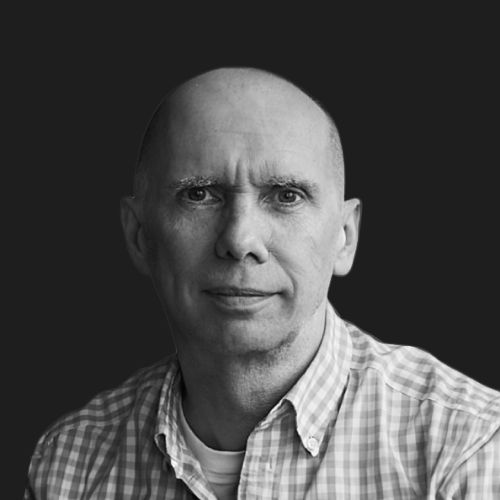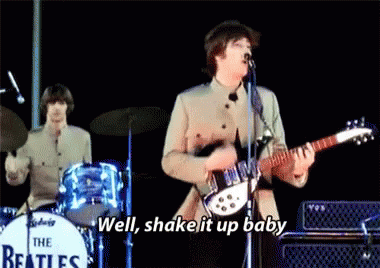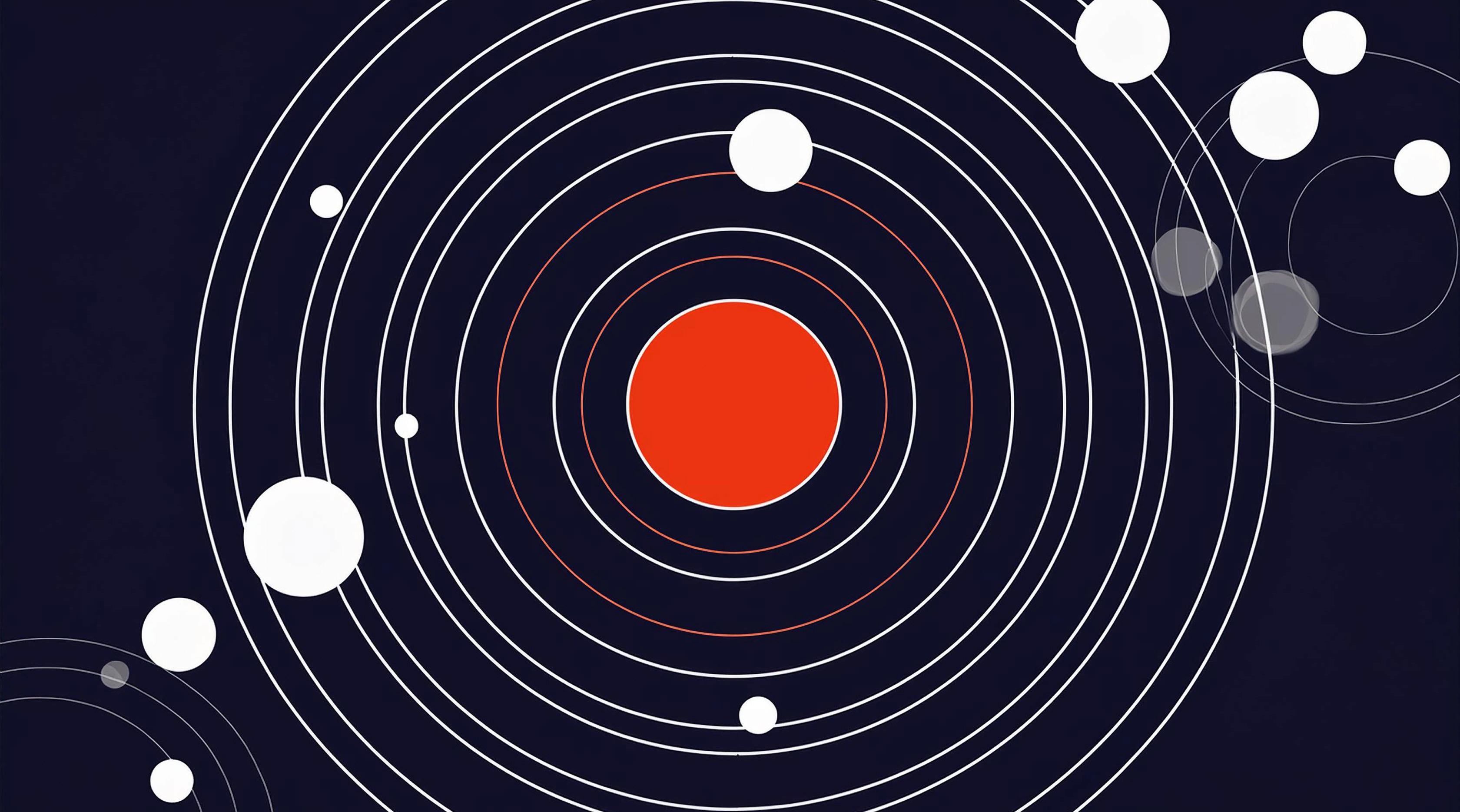Talent & Culture are your greatest assets

Scott Ewings
CEO



Talent & Culture are your greatest assets
My career over more than 30 years in customer experience strategy and design has spanned various industries - from financial services to telco, through healthcare to retail. I’ve been lucky to be part of some now iconic agencies and lead customer service and experience for a global telco. I've been lucky to have worked with both global brands and scrappy startups, helping them unlock the power of design and engineering to create innovative products and experiences that delight customers. I’ve launched some lovely products and services that have made me cry with pride and I’ve worked on a few that just made me - cry.
But through it all, I've seen first-hand that the most successful businesses are the ones that invest in their people and foster a thriving, people-centric culture.
Raven launched with a mission to help our clients transform how they build and scale their customer experience capabilities. As a team, we’ve always believed that the key to creating iconic experiences isn't just about having the right strategy or technology – it's about developing and enhancing the talent and culture that exists at the heart of your business.
We believe that despite the relentless change in technologies, nature of audiences, shifts in design and strategy nomenclature and adoption of methods, three foundational truths hold true and will continue to do so.
Technology Changes (So Deal With It)
Talent Is Your Asset (They Create Magic)
Cultivate Culture (It’s Your Rocket Fuel)
Let's break down those truths a little…
Technology Changes (So Deal With It)
The pace of technological change is relentless. For example, what was cutting-edge back in 1984 - like the revolutionary (but ultimately doomed) CD-ROM - is now ancient history - almost a hieroglyphic - a quirky relic of an earlier civilisation. What felt vital at the time was actually ephemeral and momentary, just part of an endless undulating river. Technology flotsam and jetsam.
1983 is when I finished my design degree and was sent out blinking into the world. Since then I've been through more tech cycles than I can count, from developing software and interfaces for those CD-ROMs, to the advent of the internet, through the cycle of mobile apps into social media and now AI.
Emerging technology, like a teenager, is full of promise but also has a repetitive habit of breaking things - and not always for the better!
So a bit like parents living with teenagers, rather than fear or resist the constant tide of change, our role as strategists, designers and developers is to help make sense of new technologies, guide their integration, and unlock their potential to benefit businesses, users and the world.
Help technology find its place.
Talent Is Your Asset (They Create Magic)
So, technologies might change relentlessly, but some things remain stubbornly constant. Like the critical importance of attracting, developing, and retaining top talent. The strategists, product leaders, designers, researchers and engineers on your team are the ones who will invent and bring to life the innovations that set your organisation apart.
Sadly there’s a genuine squeeze on talent going on right now, and it is a critical challenge facing brands today. It’s important to reflect that this isn’t a talent shortage necessarily, but a squeeze on talent with proven experience, and a need for a certain blend of competencies.
In our customer experience-driven world, the ideal team to create the products and services of the future requires a masterful blend of competencies - spanning business, brand, strategy, research, design, and technology. These teams need a depth of seniority and specialised skills that go far beyond the more traditional design and engineering roles, training and career paths.
Unfortunately, the accessible talent pool doesn't always align with the specific needs of today. We're often finding plenty of designers available for example, but they may lack the right level of strategic thinking, commercial acumen, or technical capabilities.
Whether you are building a team from scratch or developing an existing one, the key is identifying the core competencies you need and then thoughtfully assemble the right mix of full-time, part-time, in-house, and outsourced talent.
In addition, closing any skills gaps you might identify isn’t always about hiring in, but often requires a proper focus on career and competency development in your existing team - the wonderful talents you’ve invested so much in.
Iconic products and services have always been created by teams with a high level of mastery in business, brand, marketing, strategy, research, design and development and progressive delivery management.
But delivering compelling experience in more targeted and personalised ways is now underpinned by the dramatic progress of data-enabled platforms and AI.
As part of this acceleration in the integration and adoption of technology and platforms we need to be careful that we don’t misdirect product and service teams towards what’s easy to measure (channels, products, actions) instead of what’s important to understand (human reasoning, motivation, needs).
At Raven, we believe there’s a new blend of people fuelling the products and services of the future.
We believe that people who care deeply about designing for the customer - people who are creative and brilliant with AI and Data - and people who can pull those people together as part of a cohesive and purposeful strategy and delivery operation - are going to be the most valuable assets of any organisation.
Finally, we believe that the organisations who have a highly developed skill in hiring, blending and nurturing these competencies will bring things together in harmony - finding treasure and unlocking magic.
Whichever path you choose, people are still undoubtedly the biggest, most important and mission-critical investment decision you will make.
Cultivate Culture (It's Your Rocket Fuel)
So let’s say you’ve managed to “Assemble the Avengers” - the most suitably skilled blend of superheroes to meet your challenge and do something incredible. Good stuff - does that mean the job is done?
Unfortunately, even the most talented and best matched teams won't thrive without the right supporting culture and environment. Culture eats strategy for breakfast, as they say.
The culture you cultivate will be the rocket fuel that takes your teams to other planets.
So what ingredients make for a good culture and environment in this context?
Pool tables? Multiple boutique beers? Helter skelters? The “Fun Committee”?
Not these things! They can all play their part for sure, but in a post pandemic world, the expectations of teams are high, and genuinely nuanced.
First of all, people need purpose. At the heart of any thriving design, strategy, and engineering culture is a clear, compelling business purpose that aligns the team's work to a larger mission. Purpose is harder to retrofit than it is to start with, but a focus on this can unify and build a self-identifying community like nothing else.
But purpose alone is not enough - the physical and virtual working environment must also nurture creativity, collaboration, working modes and well-being. This could mean embracing a flexible hybrid or fully remote model that gives people the autonomy to work when and where they're most productive. It could also mean investing in the technology that enables that model. That mandatory 3 office days a week backfires if everyone is sitting on video calls with each other for example! Consider designing spaces for being together, spaces for collaboration, spaces for heads-down work. Whatever feels right for you and your team the environment needs to be carefully considered and purposefully enabled.
Equally essential is investing in robust career development programs that enable team members to continuously build new competencies and plot a path for their own growth. Everyone likes a sense of direction and path and to know that their progression is not random.
Granting your teams the "gift of time" to explore, experiment, and iterate is also critical. This is especially critical in terms of experimenting and prototyping with emerging technologies and new product or service concepts. It’s important to find time to find magic, and sometimes magic is found by accident, through serendipity, or happy accident. Products and services feeling or looking the same is no surprise, as there’s been an increasing theme of there being no room to explore creativity within iterative frameworks like Agile and Lean. Did your MVP launch with the wireframe because it was “good enough”? Come across Creative Directors who have no time to be creative? Not as unusual as you might assume. BAU thinking, “this is how we do it here” and slavish adoption of method has often been the enemy of innovation and can be the straitjacket of competency development.
Talking of competency development, the entire strategy, design and development industries and disciplines have been built on ladders - vertical and highly linear notions of progression and attainment. Whilst at the same time extolling the virtues of T-Shaped people, coding for designers and business design for everyone. In reality, whether you are agency-side or company-side, these two elements are actually diametrically opposed. The career paths that underwrite the new team blends are not vertical - they are vertical, horizontal and diagonal - and anyone running a team needs to start thinking about allowing progression to develop in non-traditional ways. Entrepreneurs and innovators do not restrict themselves to ladders. But organisations often do.
Speaking of which, the metrics used to evaluate success in the context of working environment and culture need to look beyond just bottom-line results, and instead consider factors like team dynamic, cohesiveness, welfare, inclusion, and the realisation of the organisation's purpose.
When businesses thoughtfully cultivate this kind of environment - one built on purpose, growth, and human-centricity - they empower their talented teams to produce truly transformative work.
Rocket fuel.
A Time of Reset
It feels obvious to say that we are in a major digital industry reset. There are widespread perceptions, right or wrong, that the significant investments over the past two decades - in design organisations, design thinking, user experience and product development - have failed to deliver their promised business impact. There have been successive and well publicised agency and technology business layoffs. Technology is doing its teenage disruption thing. There’s a lot of uncertainty and not a small amount of fear. If you study history it all feels very Caxton Printing Press and Spinning Jenny (we are talking much earlier tech cycles here!)
But any reset is a huge opportunity to redefine the role of design, technology and delivery leadership.
The rise of data, AI, and digital experience platforms may have squeezed some of the oxygen out of the design room. But there is still a massive need for design - perhaps greater than ever before. The opportunities presented by maturing data-enabled platforms and the acceleration of AI-driven adoption and experimentation presents a huge opportunity for flexible, dynamic and generative interfaces and services, so it might be a good time for Service Design to stage a comeback! Also, much-needed considerations of ethical deployment, inclusivity and accessibility need care and attention to avoid unfortunate accidents - let’s learn from our experiences with social media.
The key - again - is to focus on the intersection of business purpose, enabling technology, and human-centric experience. Countless new technologies have fizzed brightly, only to mature into habit - or just vanish. But through it all, passionate, talented teams have played a crucial role - not just in the craft of creating great experiences, but in leading organisations through periods of immense technological and economic disruption and change.
Resets contain hidden treasure.
Wrapping this up
Yes, things have been a bit grim in the digital and design worlds lately. All that LinkedIn angst and hand-wringing about the "death of design" and “where’s the ROI?” can really get you down. You know what they say - "may you live in interesting times." And boy, are we living in some interesting times!
But the truth is, this current "design reset" is just another cycle in the relentless march of technological change. We've seen this happen time and time again. The tech world has always been a restless teenager - full of promise, but also awkwardness and naivety and with a habit of breaking things.
Our job as designers, strategists and engineers is to help make sense of these new technologies, to guide their integration, to help our businesses make more informed, ethical and sustainable choices, to think about unintended impacts, and to unlock the potential of technology to benefit both businesses and users. The potential has never been greater.
Because when designers, strategists, and technologists work together in harmony - blending their mastery of business, brand, research, and user experience - that's when the real magic happens. That's when we have the opportunity to shape the future in revolutionary ways, to reimagine how we engage with technology and with each other as humans.
That time is now. So let's stop the LinkedIn misery and start leading the way. Let's Assemble our Avengers, cultivate the thriving cultures they need to do their best work, and show the world what design-driven innovation can really accomplish.
Technology will keep changing, but the organisations that succeed will be the ones that invest in their greatest asset - their people. If you're ready to take your talent and culture to new heights, I invite you to explore how Raven can help. Because the future belongs to those who dare to create it.
Scott & the Ravens xxxx
Talent & Culture are your greatest assets
My career over more than 30 years in customer experience strategy and design has spanned various industries - from financial services to telco, through healthcare to retail. I’ve been lucky to be part of some now iconic agencies and lead customer service and experience for a global telco. I've been lucky to have worked with both global brands and scrappy startups, helping them unlock the power of design and engineering to create innovative products and experiences that delight customers. I’ve launched some lovely products and services that have made me cry with pride and I’ve worked on a few that just made me - cry.
But through it all, I've seen first-hand that the most successful businesses are the ones that invest in their people and foster a thriving, people-centric culture.
Raven launched with a mission to help our clients transform how they build and scale their customer experience capabilities. As a team, we’ve always believed that the key to creating iconic experiences isn't just about having the right strategy or technology – it's about developing and enhancing the talent and culture that exists at the heart of your business.
We believe that despite the relentless change in technologies, nature of audiences, shifts in design and strategy nomenclature and adoption of methods, three foundational truths hold true and will continue to do so.
Technology Changes (So Deal With It)
Talent Is Your Asset (They Create Magic)
Cultivate Culture (It’s Your Rocket Fuel)
Let's break down those truths a little…
Technology Changes (So Deal With It)
The pace of technological change is relentless. For example, what was cutting-edge back in 1984 - like the revolutionary (but ultimately doomed) CD-ROM - is now ancient history - almost a hieroglyphic - a quirky relic of an earlier civilisation. What felt vital at the time was actually ephemeral and momentary, just part of an endless undulating river. Technology flotsam and jetsam.
1983 is when I finished my design degree and was sent out blinking into the world. Since then I've been through more tech cycles than I can count, from developing software and interfaces for those CD-ROMs, to the advent of the internet, through the cycle of mobile apps into social media and now AI.
Emerging technology, like a teenager, is full of promise but also has a repetitive habit of breaking things - and not always for the better!
So a bit like parents living with teenagers, rather than fear or resist the constant tide of change, our role as strategists, designers and developers is to help make sense of new technologies, guide their integration, and unlock their potential to benefit businesses, users and the world.
Help technology find its place.
Talent Is Your Asset (They Create Magic)
So, technologies might change relentlessly, but some things remain stubbornly constant. Like the critical importance of attracting, developing, and retaining top talent. The strategists, product leaders, designers, researchers and engineers on your team are the ones who will invent and bring to life the innovations that set your organisation apart.
Sadly there’s a genuine squeeze on talent going on right now, and it is a critical challenge facing brands today. It’s important to reflect that this isn’t a talent shortage necessarily, but a squeeze on talent with proven experience, and a need for a certain blend of competencies.
In our customer experience-driven world, the ideal team to create the products and services of the future requires a masterful blend of competencies - spanning business, brand, strategy, research, design, and technology. These teams need a depth of seniority and specialised skills that go far beyond the more traditional design and engineering roles, training and career paths.
Unfortunately, the accessible talent pool doesn't always align with the specific needs of today. We're often finding plenty of designers available for example, but they may lack the right level of strategic thinking, commercial acumen, or technical capabilities.
Whether you are building a team from scratch or developing an existing one, the key is identifying the core competencies you need and then thoughtfully assemble the right mix of full-time, part-time, in-house, and outsourced talent.
In addition, closing any skills gaps you might identify isn’t always about hiring in, but often requires a proper focus on career and competency development in your existing team - the wonderful talents you’ve invested so much in.
Iconic products and services have always been created by teams with a high level of mastery in business, brand, marketing, strategy, research, design and development and progressive delivery management.
But delivering compelling experience in more targeted and personalised ways is now underpinned by the dramatic progress of data-enabled platforms and AI.
As part of this acceleration in the integration and adoption of technology and platforms we need to be careful that we don’t misdirect product and service teams towards what’s easy to measure (channels, products, actions) instead of what’s important to understand (human reasoning, motivation, needs).
At Raven, we believe there’s a new blend of people fuelling the products and services of the future.
We believe that people who care deeply about designing for the customer - people who are creative and brilliant with AI and Data - and people who can pull those people together as part of a cohesive and purposeful strategy and delivery operation - are going to be the most valuable assets of any organisation.
Finally, we believe that the organisations who have a highly developed skill in hiring, blending and nurturing these competencies will bring things together in harmony - finding treasure and unlocking magic.
Whichever path you choose, people are still undoubtedly the biggest, most important and mission-critical investment decision you will make.
Cultivate Culture (It's Your Rocket Fuel)
So let’s say you’ve managed to “Assemble the Avengers” - the most suitably skilled blend of superheroes to meet your challenge and do something incredible. Good stuff - does that mean the job is done?
Unfortunately, even the most talented and best matched teams won't thrive without the right supporting culture and environment. Culture eats strategy for breakfast, as they say.
The culture you cultivate will be the rocket fuel that takes your teams to other planets.
So what ingredients make for a good culture and environment in this context?
Pool tables? Multiple boutique beers? Helter skelters? The “Fun Committee”?
Not these things! They can all play their part for sure, but in a post pandemic world, the expectations of teams are high, and genuinely nuanced.
First of all, people need purpose. At the heart of any thriving design, strategy, and engineering culture is a clear, compelling business purpose that aligns the team's work to a larger mission. Purpose is harder to retrofit than it is to start with, but a focus on this can unify and build a self-identifying community like nothing else.
But purpose alone is not enough - the physical and virtual working environment must also nurture creativity, collaboration, working modes and well-being. This could mean embracing a flexible hybrid or fully remote model that gives people the autonomy to work when and where they're most productive. It could also mean investing in the technology that enables that model. That mandatory 3 office days a week backfires if everyone is sitting on video calls with each other for example! Consider designing spaces for being together, spaces for collaboration, spaces for heads-down work. Whatever feels right for you and your team the environment needs to be carefully considered and purposefully enabled.
Equally essential is investing in robust career development programs that enable team members to continuously build new competencies and plot a path for their own growth. Everyone likes a sense of direction and path and to know that their progression is not random.
Granting your teams the "gift of time" to explore, experiment, and iterate is also critical. This is especially critical in terms of experimenting and prototyping with emerging technologies and new product or service concepts. It’s important to find time to find magic, and sometimes magic is found by accident, through serendipity, or happy accident. Products and services feeling or looking the same is no surprise, as there’s been an increasing theme of there being no room to explore creativity within iterative frameworks like Agile and Lean. Did your MVP launch with the wireframe because it was “good enough”? Come across Creative Directors who have no time to be creative? Not as unusual as you might assume. BAU thinking, “this is how we do it here” and slavish adoption of method has often been the enemy of innovation and can be the straitjacket of competency development.
Talking of competency development, the entire strategy, design and development industries and disciplines have been built on ladders - vertical and highly linear notions of progression and attainment. Whilst at the same time extolling the virtues of T-Shaped people, coding for designers and business design for everyone. In reality, whether you are agency-side or company-side, these two elements are actually diametrically opposed. The career paths that underwrite the new team blends are not vertical - they are vertical, horizontal and diagonal - and anyone running a team needs to start thinking about allowing progression to develop in non-traditional ways. Entrepreneurs and innovators do not restrict themselves to ladders. But organisations often do.
Speaking of which, the metrics used to evaluate success in the context of working environment and culture need to look beyond just bottom-line results, and instead consider factors like team dynamic, cohesiveness, welfare, inclusion, and the realisation of the organisation's purpose.
When businesses thoughtfully cultivate this kind of environment - one built on purpose, growth, and human-centricity - they empower their talented teams to produce truly transformative work.
Rocket fuel.
A Time of Reset
It feels obvious to say that we are in a major digital industry reset. There are widespread perceptions, right or wrong, that the significant investments over the past two decades - in design organisations, design thinking, user experience and product development - have failed to deliver their promised business impact. There have been successive and well publicised agency and technology business layoffs. Technology is doing its teenage disruption thing. There’s a lot of uncertainty and not a small amount of fear. If you study history it all feels very Caxton Printing Press and Spinning Jenny (we are talking much earlier tech cycles here!)
But any reset is a huge opportunity to redefine the role of design, technology and delivery leadership.
The rise of data, AI, and digital experience platforms may have squeezed some of the oxygen out of the design room. But there is still a massive need for design - perhaps greater than ever before. The opportunities presented by maturing data-enabled platforms and the acceleration of AI-driven adoption and experimentation presents a huge opportunity for flexible, dynamic and generative interfaces and services, so it might be a good time for Service Design to stage a comeback! Also, much-needed considerations of ethical deployment, inclusivity and accessibility need care and attention to avoid unfortunate accidents - let’s learn from our experiences with social media.
The key - again - is to focus on the intersection of business purpose, enabling technology, and human-centric experience. Countless new technologies have fizzed brightly, only to mature into habit - or just vanish. But through it all, passionate, talented teams have played a crucial role - not just in the craft of creating great experiences, but in leading organisations through periods of immense technological and economic disruption and change.
Resets contain hidden treasure.
Wrapping this up
Yes, things have been a bit grim in the digital and design worlds lately. All that LinkedIn angst and hand-wringing about the "death of design" and “where’s the ROI?” can really get you down. You know what they say - "may you live in interesting times." And boy, are we living in some interesting times!
But the truth is, this current "design reset" is just another cycle in the relentless march of technological change. We've seen this happen time and time again. The tech world has always been a restless teenager - full of promise, but also awkwardness and naivety and with a habit of breaking things.
Our job as designers, strategists and engineers is to help make sense of these new technologies, to guide their integration, to help our businesses make more informed, ethical and sustainable choices, to think about unintended impacts, and to unlock the potential of technology to benefit both businesses and users. The potential has never been greater.
Because when designers, strategists, and technologists work together in harmony - blending their mastery of business, brand, research, and user experience - that's when the real magic happens. That's when we have the opportunity to shape the future in revolutionary ways, to reimagine how we engage with technology and with each other as humans.
That time is now. So let's stop the LinkedIn misery and start leading the way. Let's Assemble our Avengers, cultivate the thriving cultures they need to do their best work, and show the world what design-driven innovation can really accomplish.
Technology will keep changing, but the organisations that succeed will be the ones that invest in their greatest asset - their people. If you're ready to take your talent and culture to new heights, I invite you to explore how Raven can help. Because the future belongs to those who dare to create it.
Scott & the Ravens xxxx
Ready to unlock your potential?

Call us on 0207 9474 940 or message us to discover how we can transform your business.
©2025 Raven Ltd. Borough Yards, 13 Dirty Lane, London SE1 9PA
Ready to unlock your potential?

Call us on 0207 9474 940 or message us to discover how we can transform your business.
©2025 Raven Ltd. Borough Yards, 13 Dirty Lane, London SE1 9PA
Ready to unlock your potential?

Call us on 0207 9474 940 or message us to discover how we can transform your business.
©2025 Raven Ltd.
Borough Yards, 13 Dirty Lane, London SE1 9PA








